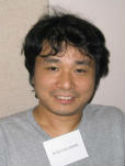Human Fanconi anemia monoubiquitination pathway promotes homologous DNA repair Journal Article
| Authors: | Nakanishi, K.; Yang, Y. G.; Pierce, A. J.; Taniguchi, T.; Digweed, M.; D'Andréa, A. D.; Wang, Z. Q.; Jasin, M. |
| Article Title: | Human Fanconi anemia monoubiquitination pathway promotes homologous DNA repair |
| Abstract: | Fanconi anemia (FA) is a recessive disorder characterized by congenital abnormalities, progressive bone-marrow failure, and cancer susceptibility. Cells from FA patients are hypersensitive to agents that produce DNA crosslinks and, after treatment with these agents, have pronounced chromosome breakage and other cytogenetic abnormalities. Eight FANC genes have been cloned, and the encoded proteins interact in a common cellular pathway. DNA-damaging agents activate the monoubiquitination of FANCD2, resulting in its targeting to nuclear foci that also contain BRCA1 and BRCA2/FANCD1, proteins involved in homology-directed DNA repair. Given the interaction of the FANC proteins with BRCA1 and BRCA2, we tested whether cells from FA patients (groups A, G, and D2) and mouse Fanca -/- cells with a targeted mutation are impaired for this repair pathway. We find that both the upstream (FANCA and FANCG) and downstream (FANCD2) FA pathway components promote homology-directed repair of chromosomal double-strand breaks (DSBs). The FANCD2 monoubiquitination site is critical for normal levels of repair, whereas the ATM phosphorylation site is not. The defect in these cells, however, is mild, differentiating them from BRCA1 and BRCA2 mutant cells. Surprisingly, we provide evidence that these proteins, like BRCA1 but unlike BRCA2, promote a second DSB repair pathway involving homology, i.e., single-strand annealing. These results suggest an early role for the FANC proteins in homologous DSB repair pathway choice. |
| Keywords: | unclassified drug; gene mutation; human cell; ubiquitin; protein function; mammalia; dna damage; gene; homologous recombination; dna repair; cancer susceptibility; protein targeting; cell line; gene product; cytogenetics; protein interaction; brca1 protein; brca2 protein; dna strand breakage; nuclear proteins; molecular cloning; dna; double stranded dna; ubiquitination; recombination, genetic; chromosome breakage; cell nucleus; sequence homology; drug sensitivity; dna cross linking; fanconi anemia; double-strand break repair; fanconi anemia group d2 protein; fanconi anemia complementation group d2 protein; bone marrow depression; congenital malformation; fanconi anemia group a protein; mammalian cells; monoubiquitination; fanconi anemia group g protein; fanc; fanc gene |
| Journal Title: | Proceedings of the National Academy of Sciences of the United States of America |
| Volume: | 102 |
| Issue: | 4 |
| ISSN: | 0027-8424 |
| Publisher: | National Academy of Sciences |
| Date Published: | 2005-01-25 |
| Start Page: | 1110 |
| End Page: | 1115 |
| Language: | English |
| DOI: | 10.1073/pnas.0407796102 |
| PUBMED: | 15650050 |
| PROVIDER: | scopus |
| PMCID: | PMC545844 |
| DOI/URL: | |
| Notes: | --- - "Cited By (since 1996): 158" - "Export Date: 24 October 2012" - "CODEN: PNASA" - "Source: Scopus" |
Altmetric
Citation Impact
BMJ Impact Analytics
Related MSK Work






